Anchor Text Distribution Guide for Link Building + Real Examples
Daniel Trick
Nov 06, 2024
7 min read
Unnatural anchor text distribution is a clear red flag for search engines.
It’s one of the most common link building footprints. And it can get you into a heap of trouble.
Your website can be demoted or even removed from search results.
If you’re building links, anchor text distribution is one of the most important things to get right.
Here at fatjoe, we do a lot of link building. In this guide, we’ll show what works and what to avoid – with real examples.
We’ll cover:
- What an anchor text is
- Why keyword anchor text is dangerous
- Why you should use natural anchor text
- Lessons from big brands
- The tactics you should use to rank for your target keywords
Rather watch rather than read? Don’t worry; we’ve also got a full video guide right here!
What Is Anchor Text?
Anchor text is the clickable text in a hyperlink. It tells people what they will find if they click on the link.
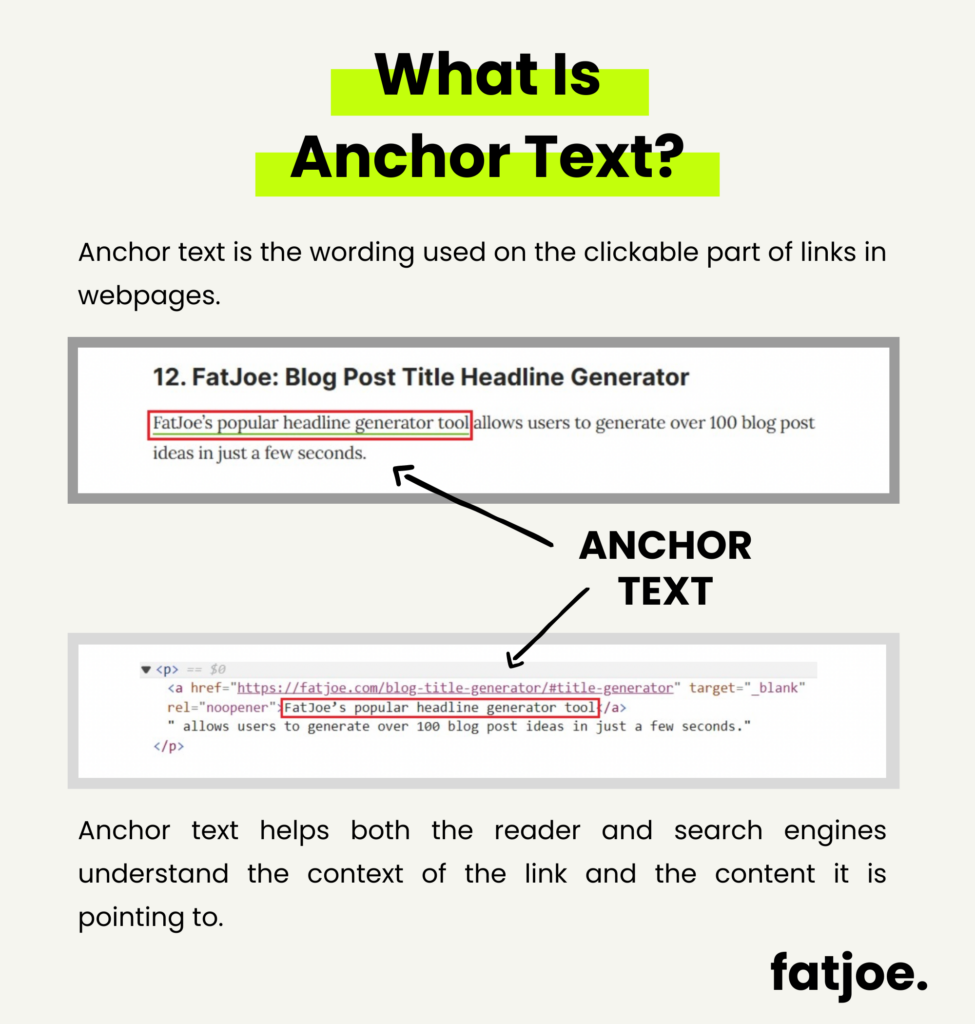
Anchor text plays an important role in SEO. It helps search engines understand the content and context of the linked page so it can rank in relevant search results.
Descriptive anchor texts also enhance the user experience. They help people understand what they will find when they click a link.
Types of Anchor Text
There are five main types of anchor text. Understanding these types can help you create a more natural link profile.
Exact Match
The anchor text is the exact keyword you want to rank for. For example, if the target keyword is “blue sneakers,” the anchor text would be “blue sneakers,” too.
Partial Match
The anchor text contains the keyword along with other words. Using the same keyword example, a partial match anchor text would be “buy blue sneakers online.”
Branded
The anchor text is the name of a brand or company. For example, “Nike” or “Amazon.”
Generic
Generic anchor texts are common words that don’t describe the content on the linked page. Some common examples include “click here” and “learn more.”
Naked URLs
The anchor text is the URL of the linked page, like “www.examplesite.com.”
Why Keyword Anchor Texts Can Be Dangerous
The most obvious sign that a website is building links to manipulate search results is unnatural anchor text distribution. It’s a clear link building footprint.
Here’s a quick SEO history lesson.
Back in the day, if you sold ‘red cars,’ all you had to do was get enough links with exact match anchors, and you’d rank.
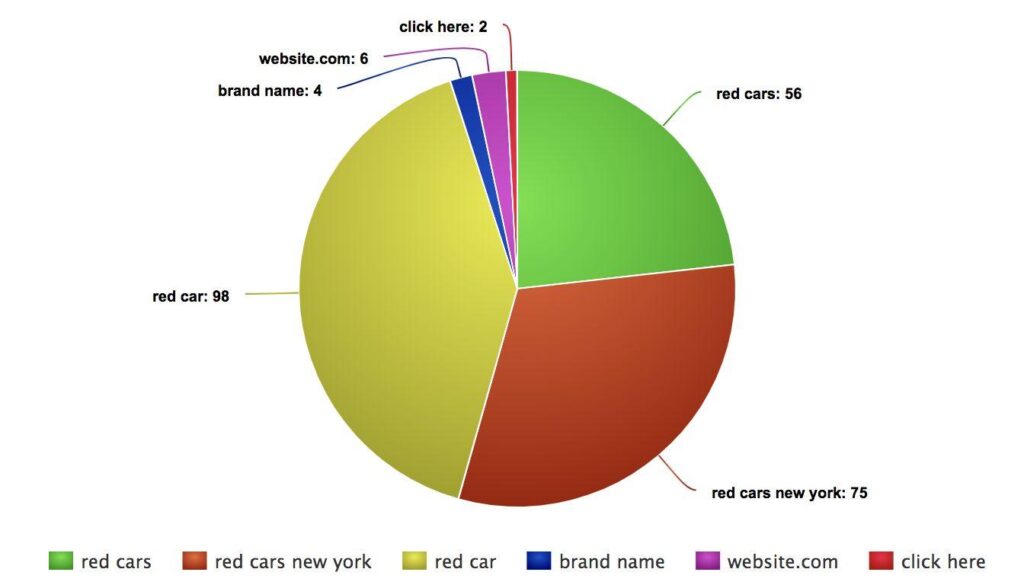
That all changed in 2012 with the Google Penguin algorithm update.
The primary purpose of Penguin was to penalize websites using manipulative link building techniques.
One of the main things Google looked for to identify websites breaching webmaster guidelines was anchor text distribution.
A study at the time found that websites with a high percentage of keyword anchor text were penalized the most by the update.
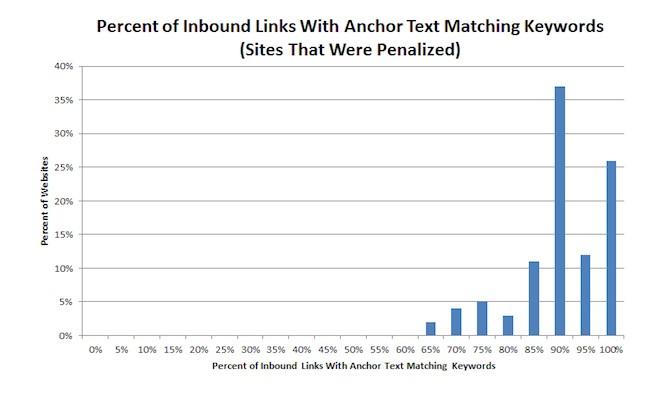
Google’s algorithms are much more advanced than they were in 2012.
And they are much more likely to catch websites with unnatural anchor text distribution.
Today, if you build all of your links with exact-match keyword anchor texts, you’re highly likely to get penalized.
🎯SEO Pro Tip #72: Avoid building direct anchor match backlinks.
If 80% of your backlink anchors match the keywords you want to rank for, Google is very likely to catch on that you’re buying these backlinks.
Instead, use a variety of anchor texts, including brand mentions.
— Nick Zviadadze 🇺🇦 (@Nick_zv_) January 19, 2023
What Is Natural Anchor Text?
A “natural anchor text” appears organic and unforced within the content. It provides additional value and context to the reader.
For example, a blog post on personal finance might naturally link to a relevant page on how to save money with the anchor text “budgeting tips.”
Generally, natural anchor text isn’t a commercial keyword phrase. But that’s not always the case.
Example of Natural Anchor Text
Natural anchor text prioritizes the user experience over keyword targeting.
Here’s an example:
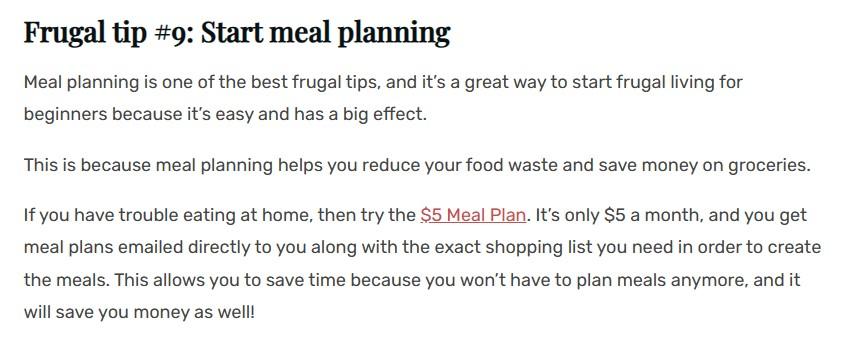
The “$5 Meal Plan” anchor text is relevant and accurately describes the linked service. It also provides a clear idea of what users can expect when they click on the link.
And it fits seamlessly into the surrounding content. It doesn’t feel forced or out of place.
The anchor text adds value to the content.
Example of Unnatural Anchor Text
To show you an example of unnatural anchor text, I found a website that’s probably selling links. It’s a fashion, lifestyle, and parenting blog.
But one of the featured articles on the homepage is a post on tax fraud.
And in the first paragraph of the article, there’s a link to a legal firm using the anchor text “defense lawyers los angeles.”

This link isn’t great for a few reasons.
First, it’s an article on tax fraud published on a fashion, lifestyle, and parenting blog. The post isn’t really relevant to any of the topics the website covers.
As for the anchor text, it’s placed awkwardly within the sentence and disrupts the flow of the content. The link also points to a service page that doesn’t provide any real additional value to the reader.
It’s clearly a keyword anchor text for link building.
Lessons From Big Brands – Anchor Text Distribution Analysis
If you want to stay ‘safe’ with your anchor text, it’s always best to mimic the biggest brands and websites that rank well online.
The most powerful and high-ranking websites don’t have high keyword anchor text distribution in their link profile. In fact, it makes up less than 10%.
Amazon
When you’re shopping for something, you’ll usually see Amazon ranking in Google. They must be doing something right.
Here’s a snapshot of the top anchor texts for Amazon:
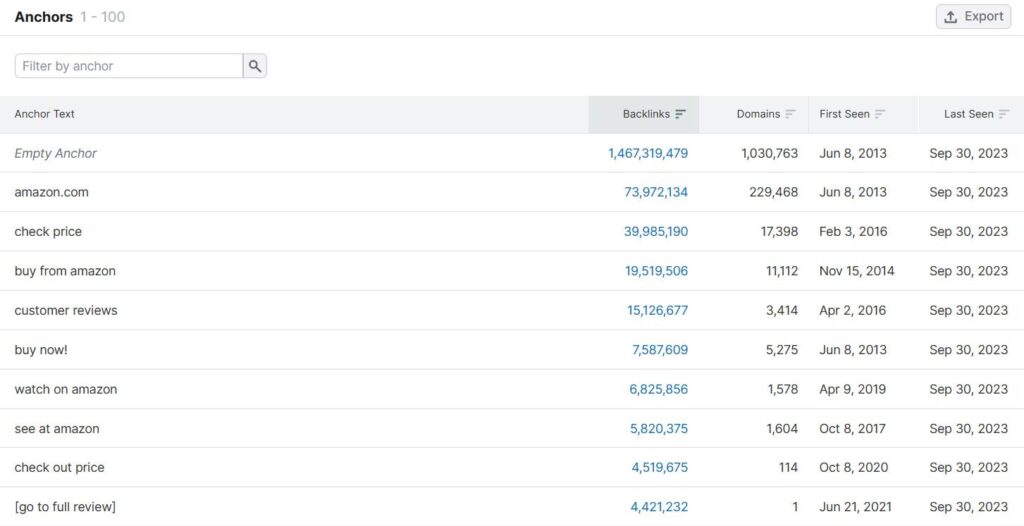
The top anchor texts are mostly branded and variations.
Wikipedia
Wikipedia is the world’s largest content site. When you search for information on almost any topic, Wikipedia is bound to show up on the first page of Google.
Here’s what Wikipedia’s top anchors look like:
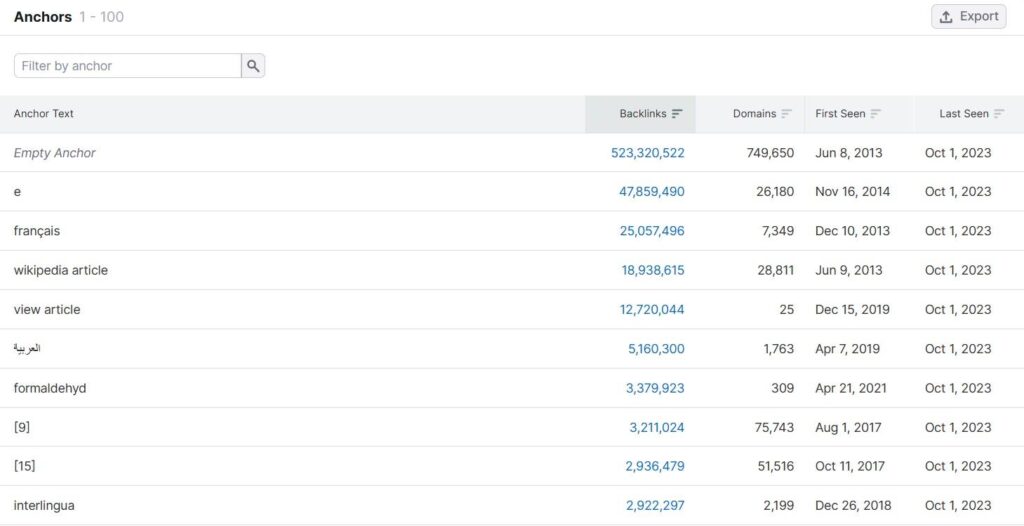
Tripadvisor
The same happens in competitive verticals like travel. Tripadvisor uses programmatic SEO to rank for thousands of travel-related queries.
But keywords like ‘holidays’ and ‘travel’ don’t feature as top anchors.
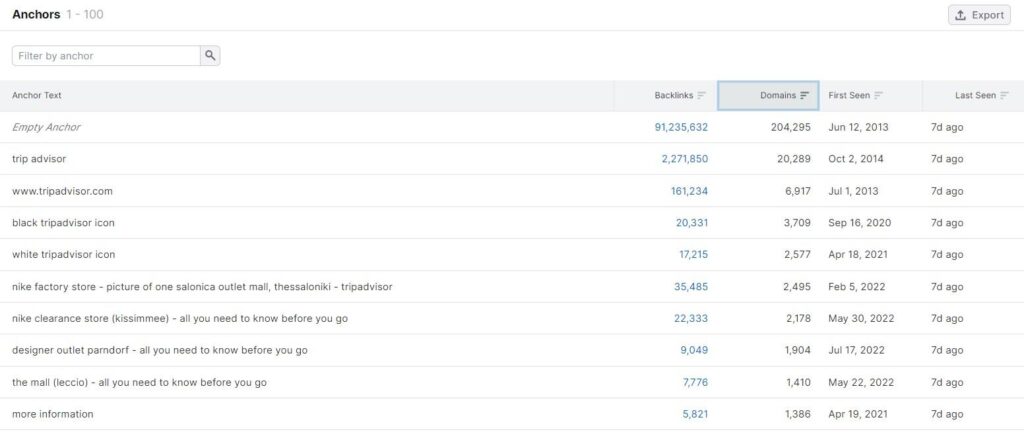
Their anchor text distribution is mostly URL and branded.
You don’t need exact match anchor text to rank for a keyword or phrase.
Some industries are more cutthroat. But you should always take a cautious approach. What’s working for competitors today may be their downfall tomorrow.
Most markets don’t need aggressive keyword anchor text optimization. You can dominate the search engine results pages with a natural-looking link profile.
Backlinks will destroy your website.
If you’re not careful.
Using exact-match anchor text is a surefire way to get your website penalized.
Aim for this anchor text ratio:
– 50% – Branded
– 25% – Topic-related
– 15% – Miscellaneous/CTA
– 10% – Target keyword variations— Kai Cromwell | SEO (@KaiCromwell) December 6, 2022
How to Rank Without Using Exact Match Keyword Anchor Text
Instead of risking a Google penalty, here’s what you can do instead to rank for your target keywords.
On-page SEO Optimization
Before you start building links to a page, make sure you’ve nailed down the fundamentals.
That means producing high-quality content that matches the search intent of the keyword you’re targeting.
If you’re targeting the keyword ‘red cars,’ make your page more relevant and valuable than the pages already ranking in the SERP.
Make sure your keyword is mentioned naturally within the flow of content and in the title and meta description. It’s also a good idea to include your keyword in the page URL.
There are a lot more bases to cover for on-page optimization. You can use our on-page SEO checklist to make sure you’re ticking all the boxes you need to.
Internal Linking
Internal links help to distribute ‘link juice’ to the other pages on your website.
Once you’ve created some awesome content, use internal linking to show search engines how important the page is. The more relevant pages on your site linking to your content, the more important it appears to search engines.
A good internal linking structure also helps users navigate your site and makes it easier for search engines to crawl and index your pages.
Unlike external backlinks, you can decide the exact wording of your internal anchor texts.
You can also be more aggressive with exact keyword anchor text.
The simplest SEO win we have ever experienced is updating generic internal link anchor text to keyword anchors.
— Ross Tavendale (@rtavs) May 22, 2023
Check out our internal linking guide to learn how you can maximize the impact of your internal anchor links.
Diversify Anchor Text
When you start building links, use a variety of phrases and keywords as your anchor texts.
You can use keyword-rich anchor text, but it shouldn’t account for more than 10% of the links pointing to the page. It should also be contextually relevant to the linking page.
The rest of your links should be topic-related, generic, and branded anchor text.
If you’re working on a blogger outreach campaign, give the blogger the freedom to link to your site in a way that feels natural for their content.
Use tools like Ahrefs or Semrush to keep track of your backlink profile and anchor text distribution.
Keep Track of Your Anchor Text for Safe and Effective Link Building
Anchor text distribution can make or break your search ranking.
You don’t want to have to deal with a Google penalty tanking your client’s organic traffic. It’s bad for your client and bad for your agency’s reputation.
Keep it natural and avoid over-optimization.
That’s how you build trust and deliver long-term value to your clients.
Become a Pro at SEO
Join 65,000 others and learn the secrets to SEO success with our weekly blog posts.
